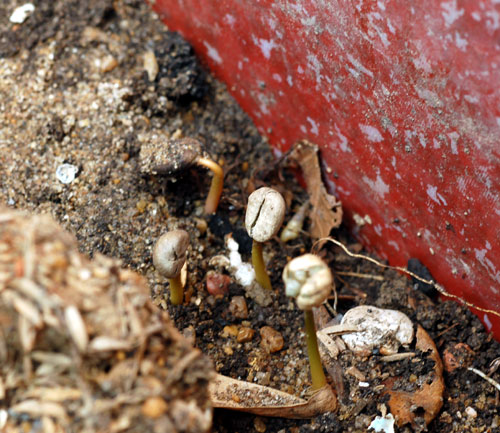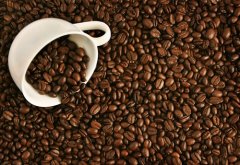The growth process of coffee trees

The bud that has just emerged looks like it is ready to bloom. The birth of life has just begun

The seed next to it has sprouted and two beautiful young leaves


The small bud next to it needs refueling, it will sprout and grow leaves soon.

Now the bud is not high, it is estimated to be only five or six centimeters.
Important Notice :
前街咖啡 FrontStreet Coffee has moved to new addredd:
FrontStreet Coffee Address: 315,Donghua East Road,GuangZhou
Tel:020 38364473
- Prev

The basic knowledge of espresso the common sense of ESPRESSO
Literally, espresso means that it is made on the spot after a customer orders, but when it is used in coffee, it changes from an adjective to a noun. It is a chemical and physical product. Professionally made espresso is made of dissolved sugar, caffeine and protein, oily and colloidal emulsions, suspended coffee particles and tiny bubbles. Vision (cheese-like foam or crema stimulates taste buds)
- Next

The basic knowledge of Coffee planting
What is coffee? Coffee is the fruit of a Rubiaceae plant growing about 6000 feet above sea level, distributed on the world's narrow subtropical axis; coffee trees grow green all the year round and can grow up to 20 feet tall, and are generally controlled at 8 to 10 feet for easy harvest. It takes three to five years for the coffee tree to bear fruit. First of all, it produces small white flowers that resemble jasmine in shape and size.
Related
- Beginners will see the "Coffee pull flower" guide!
- What is the difference between ice blog purified milk and ordinary milk coffee?
- Why is the Philippines the largest producer of crops in Liberia?
- For coffee extraction, should the fine powder be retained?
- How does extracted espresso fill pressed powder? How much strength does it take to press the powder?
- How to make jasmine cold extract coffee? Is the jasmine + latte good?
- Will this little toy really make the coffee taste better? How does Lily Drip affect coffee extraction?
- Will the action of slapping the filter cup also affect coffee extraction?
- What's the difference between powder-to-water ratio and powder-to-liquid ratio?
- What is the Ethiopian local species? What does it have to do with Heirloom native species?

